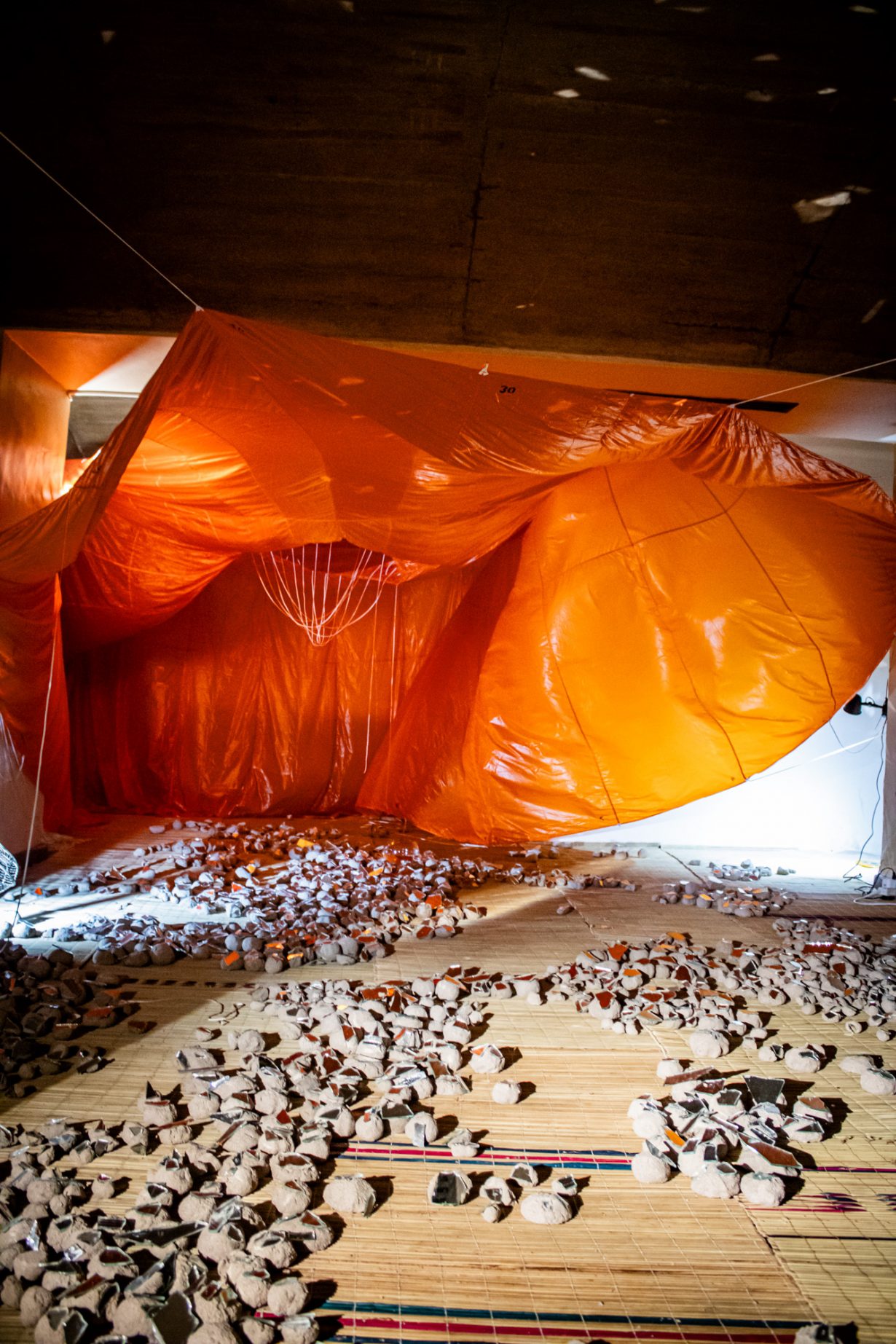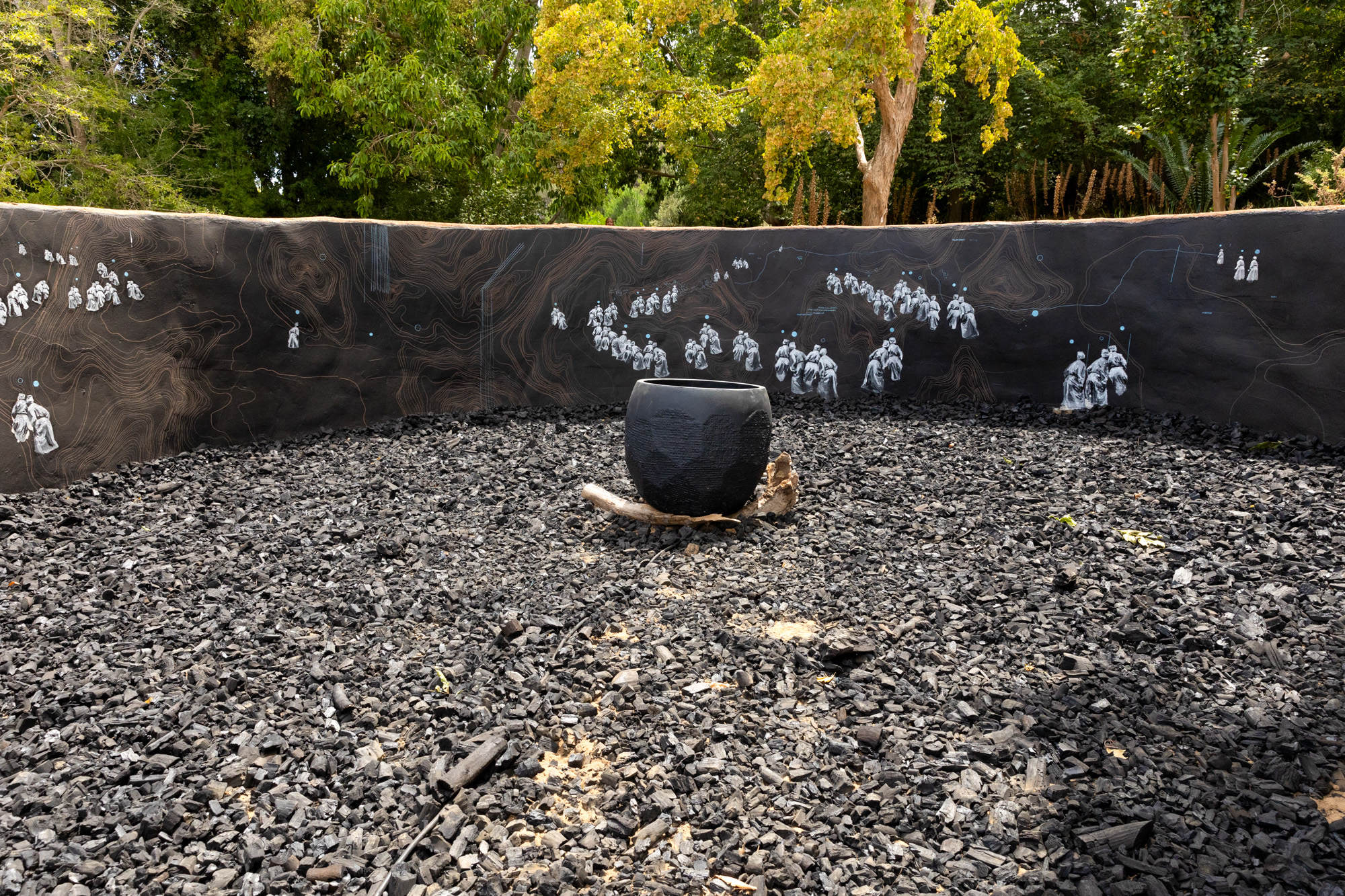BA’ZINZILE: A Rehearsal for Breathing explores African conceptions of nonlinear time
Gathered together by Khanyisile Mbongwa, the 28 practitioners in this multisite exhibition, 26 from across the Global South as well as two from the United States, are attuned to breathe in the tempo of African conceptions of nonlinear time. BA’ZINZILE: A Rehearsal for Breathing takes breathing as a metaphor for the historical and personal dimensions of living – breathing as fundamental to life and as a sign of endurance and survival – while the three main exhibitions look to past, present and future. At the main Oude Libertas venue, On the Cusp and In the Current present explorations of breath, memory and cultural resistance. The triennial also unsettles the Stellenbosch University Museum and the Rupert Museum, which together present From the Vault, an exhibition concerned with unearthing institutional and individual collections, pushing the limits of the archive to critically engage with society and culture.
At the Rupert Museum, From the Vault returns to the effects of South Africa’s 1913 Natives’ Land Act that restricted land ownership for Black citizens. Landscape paintings from the museum’s collection vividly depict the parched earth scenery of Southern Africa and are placed alongside Kemang Wa Lehulere’s frenetic and phantasmic abstract oil paintings, such as the lush green mystical ideation of the earth below The odds must be crazy (2023–24). The soothing overtures of savant jazz trumpeter Mandla Mlangeni resonate in the museum space, as the soundtrack for Wa Lehulere’s film Mhlekazi (After Bird Song) (2025). A sense of displacement is produced by Anton van Wouw’s bronze sculptures, presented in a central line across the exhibition space. Two figures in the series stand out: Shangaan (1907) is a gilded bronze bust of a Black man with a vexed gaze and arms folded beneath his chest, while his wretched counterpart, Accused (1907), has a contrastingly defeated look. The aesthetics of the two balances somewhere between anthropological artefacts that represent the ‘Other’, while at the same time immortalising a people torn from their geographic inheritance. The sprawling landscape oil paintings dating back to the apartheid era become inhabited by these resuscitated bronze subjects, with Wa Lehulere’s contemporary works operating as a critical mirror to such colonial-era archives.

This call-and-response between past and present extends to Oude Libertas, one of the oldest wineries in South Africa, whose grounds are transformed by 18 artists and seven filmmakers. Here, Helen Zeru’s work Institutionalisation of the informal, an installation subtitled Between Worlds: Art, Memories and Informal Community Ties (2025), invokes an excavation, this time in the form of a dug-up grave with mirrors at the bottom, recalling the memory of her mother’s remains being displaced in Ethiopia. Traversing generations and cultural geographies, the work’s intimation of healing as a creative process is a sentiment that is present throughout the triennial. Beyond vineyards that whisper histories of labourers being paid in the wine they harvested, in a room in the basements of the Oude Libertas building, Thierry Oussou’s work Politics of the Seed (2025) cultivates the sensorial experience of the winemaking process with an immersive installation of mirrors and disintegrating grapevines. The afterlives of slavery are articulated by Torkwase Dyson’s outdoor sound installation Letters from the madhouse (2025), an intimate headphone-listening experience that creates a sonic history of the Middle Passage, interspersed with the sounds of water and echoes of Billie Holiday’s hauntingly beautiful melody Strange Fruit (1939).
For their sharp ability draw on dreams and memories for inspiration, the most compelling installations are situated outdoors. Up the hill from Dyson’s work, Manyaku Mashilo’s Towards our ancestors who lean towards us, with bent spines, trying to tell us where we are from, where we are going. (2025) is a rounded structure with a painted mural depicting female ancestral figures dressed in white, surrounded by ripples that look like map contours. The space feels sacred as you enter, stepping onto charcoal: after the fire comes new growth, a collective memory bank of cosmically chartered narratives populated by matriarchal wisdom.
If Mashilo uses natural materials like sticks and clay from the surrounding environment, so Simphiwe Buthelezi uses ocean sand for her enchanting installation in the Oude Libertas. With To read a book backwards (2025), Buthelezi has arranged dynamic interactions between broken mirrors and ocean sand on reed mats, reminiscent of a landscape seen from high above. Mirrors are rife throughout the triennial, a visual commentary on time passing and a familiar surface for rehearsing our appearance in the outside world. For its transdisciplinary and intercultural offerings that urge us to reflect on cartographies, archives and site-specific installations, this triennial on the southernmost edge of the African continent breathes new life into notions of healing and the infinite time continuum of culture.
Stellenbosch Triennale 2025: BA’ZINZILE: A Rehearsal for Breathing, Various venues, Stellenbosch, through 30 April
From the April 2025 issue of ArtReview – get your copy.
